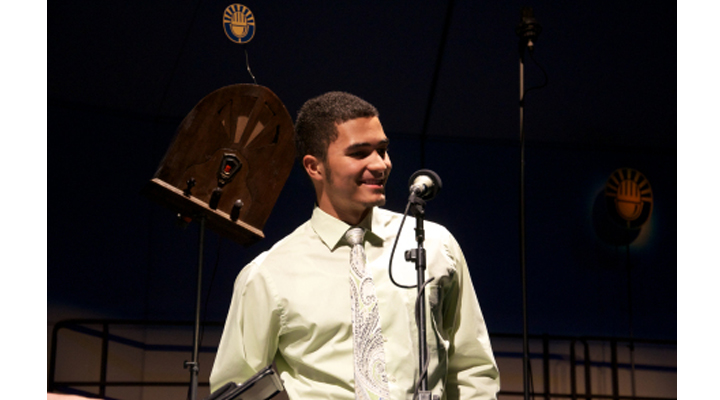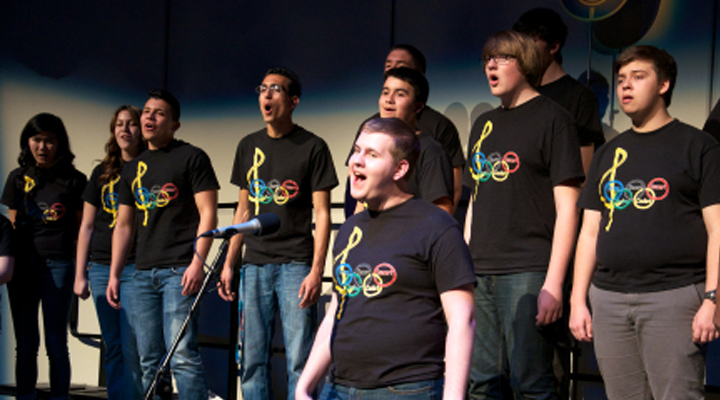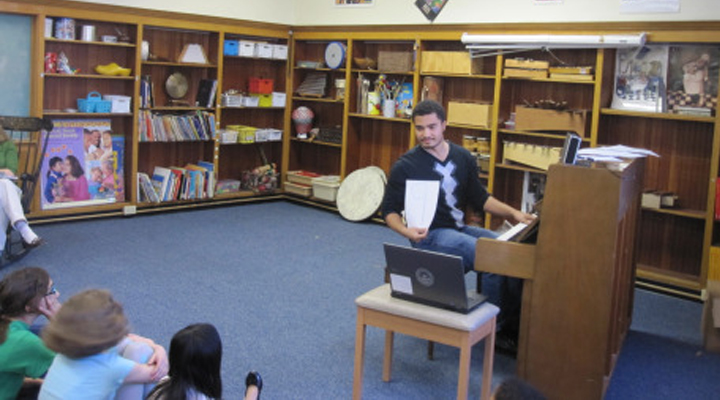Meet the Artist: Trey Pernell
Growing up in Denver, Colorado, Trey Pernell was a student with many talents. Despite some significant challenges in his home life, Trey decided that he would not let that hardship keep him from achieving his goals. For him, “not achieving was not an option.”
Beyond his academic pursuits, Trey has very diverse interests that include but also go beyond classical music. He composes music for and performs with his band, Atticus Rex. He raps, and also plays drums, guitar, and bass. Through online tutorials, he’s learned and participated in competitive break dancing. He’s also competed as a wrestler. He is a classically-trained pianist, and also sings in a cappella choirs.
However, it was his talents as a composer, complemented by his tenacity and drive, that attracted the attention of both From the Top and the Jack Kent Cooke Foundation.
In 2013, 17-year-old Trey appeared on From the Top Show 269.

His piece “O Captain! My Captain!” based on the Walt Whitman poem, was performed by the Phoenix Children’s Chorus.

In addition to appearing on From the Top, Trey also won the Jack Kent Cooke Young Artist Award, a $10,000 scholarship given to extraordinary young musicians with financial need. Everyone who receives this award is required to complete an outreach project where they bring their talents out into the community to make a difference.
Trey’s project was inspired by his strong belief in the power of classical music, and in its existence as a living art.
“Classical music is a constantly changing art – NOT a remnant of what occurred hundreds of years ago. I hope to communicate that there is a vast well of genius contained in many classical recordings and manuscripts; genius that has an unparalleled ability to mirror the human soul.”
As his outreach project, Trey chose to design a composition lesson for a group of children at a local school in Denver. Here is his reflection on the experience in his own words:
When I decided at the age of ten that I wanted to compose music, is was by pure luck that I even knew at that point what music composition was. My musical education up to that point had consisted of several piano lessons, and an occasional encounter with a clarinet, violin, or oboe in elementary school. In my head, composers were people who wore frilly clothes, wore powdered wigs, and lived many hundreds of years ago. Discovering the modern composer was a moment of self-realization: The idea that in addition to playing music written by other people, that I could write some of my own, simply popped into my head one night at the piano. I think that there are many potentially talented composers out there, however, who haven’t discovered this yet. Students who haven’t quite come across the idea of composition, who feel as though they have something significant within themselves to express, but don’t know how to do it.
That is why I wanted to lead a seminar that exposed children to the idea of modern musical composition. I want to let kids know that beyond powdered wigs and old waltzes, beyond song-writers with guitars, and beyond pop-stars that there is a vibrant community of people composing modern classical music. For this seminar, I returned to my elementary school, the Polaris Program at Ebert Elementary in Denver, Colorado. In the same room I sat in when I was ten years old, first beginning to play the piano and write music, I sat at a piano in front of twenty children– ready to do the same.
The seminar consisted of several parts: First, I played for them snippets of Mozart, Beethoven and Bach and asked them who they thought composed it, to which they raised their hands eagerly and shouted out the names of the composers that they knew. Second, to give them an idea of what modern composition is like (and how classical composition has evolved), I played John Cage’s 4’33 for them. Watching their reactions to the several minutes of silence was fantastic; they got the idea fairly quickly and were intrigued by the idea that a piece could really consist of nothing but silence and the awkward shifting around of the audience. After elaborating on 4’33, I showed them several other examples of modern composition, such as Eric Whitacre’s tone cluster from When David Heard, and Emmanuel Sejourn’s Concerto for Marimba. Lastly, we played a mad-libs composition style game, where the children and I got to collaborate on creating a song of our own. For this mad-libs game, I created an outline to a song, with several blanks in the song. For each blank there was a descriptor that the children got to fill in. For example, when the outline reached a ‘scary’ part of the song, I asked the kids if they could make a ‘scary’ sound for me. They loved getting to participate in the music making process, and came up with some very intriguing sounds.
What I loved about getting to conduct this seminar was the ability to work with children, and see that I was, to some extent, introducing these children to modern composition—something that they hadn’t encountered before. They picked up the mad-libs game very quickly, and were fantastically musically intuitive. They listen to modern music with an ear of openness that many of my non-musician peers do not. I am incredibly grateful for the opportunity to have worked with these children, and look forward to potentially introducing musical composition to more children in my community and abroad!
Trey is now a sophomore at Yale University. Among his many activities, he sings in the a cappella group, “The Duke’s Men of Yale.”
With this kind of passion and talent, we can’t wait to see how Trey brings his talents beyond the concert hall in the years to come.



